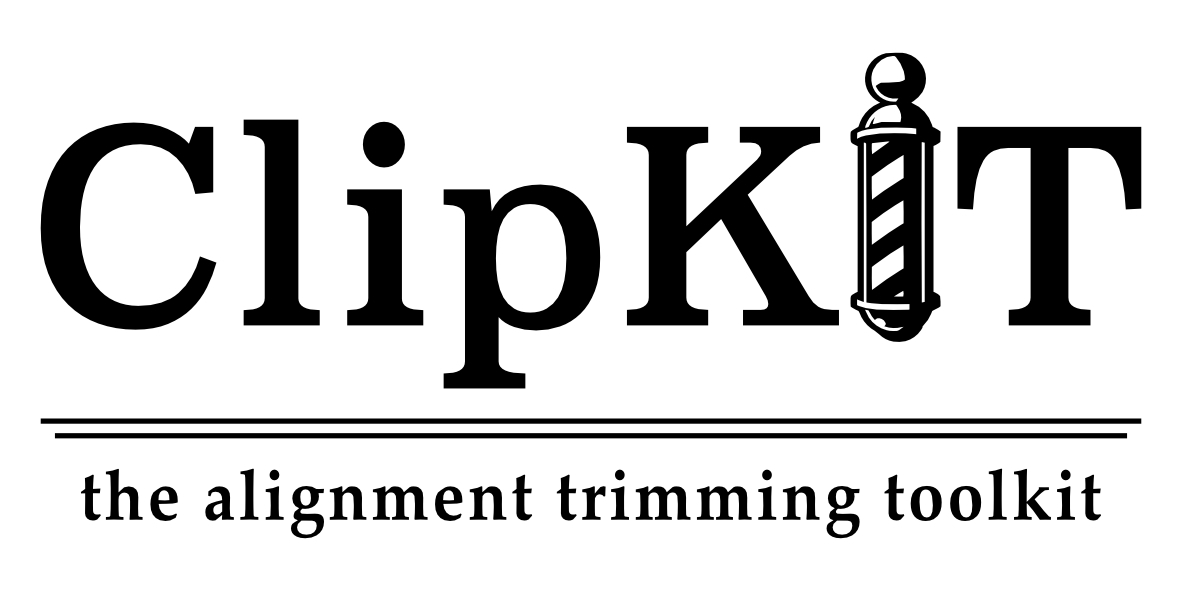 Since the early 1990's, there has been one predominant guiding light for multiple sequence alignment trimming -
the removal of phylogenetically uncertain sites defined as those that are highly divergent; however, the
efficacy of this approach has been called into question. ClipKIT implements an alternative strategy wherein
sites with phylogenetic certainty are retained and others are removed. Our benchmarking analyses show that
ClipKIT is a reliable and top performing software.
Since the early 1990's, there has been one predominant guiding light for multiple sequence alignment trimming -
the removal of phylogenetically uncertain sites defined as those that are highly divergent; however, the
efficacy of this approach has been called into question. ClipKIT implements an alternative strategy wherein
sites with phylogenetic certainty are retained and others are removed. Our benchmarking analyses show that
ClipKIT is a reliable and top performing software.
Run ClipKIT in the browser and leave the computing up to us!
Publication PDF
Documentation
Source Code








PhyKIT
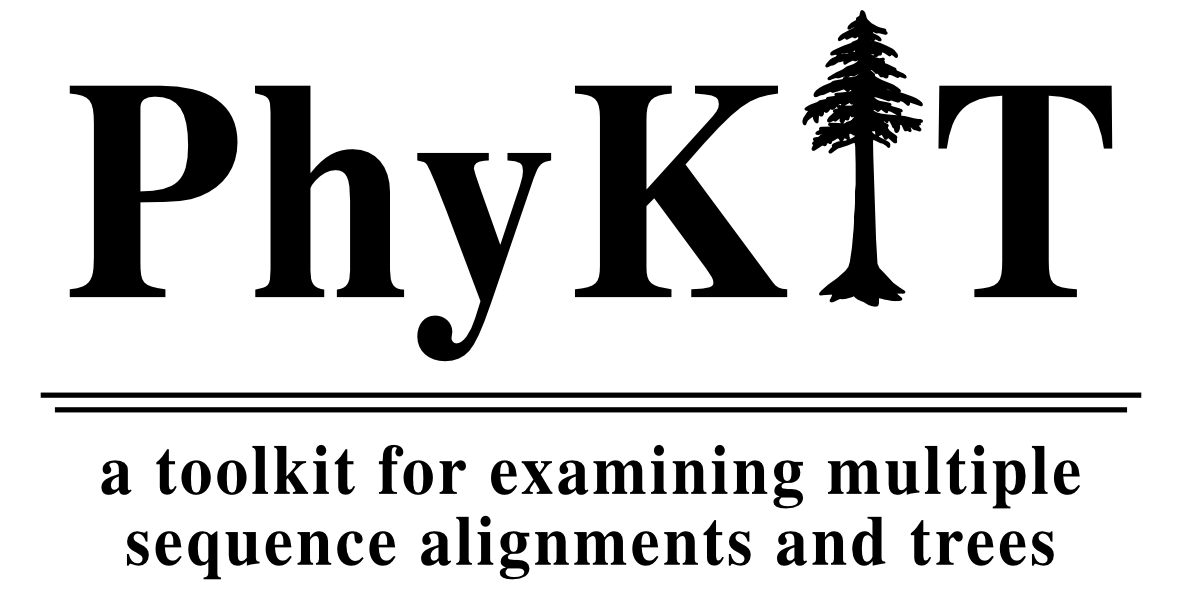 Diverse disciplines in biology process and analyze multiple sequence alignments (MSAs) and phylogenetic trees
to evaluate their information content, infer evolutionary events and processes, and predict gene function.
However, automated processing of MSAs and trees remains a challenge due to the lack of a unified toolkit.
To fill this gap, we introduce PhyKIT, a Swiss-army knife-like toolkit for processing and analyzing
multiple sequence alignments and phylogenetic trees.
Diverse disciplines in biology process and analyze multiple sequence alignments (MSAs) and phylogenetic trees
to evaluate their information content, infer evolutionary events and processes, and predict gene function.
However, automated processing of MSAs and trees remains a challenge due to the lack of a unified toolkit.
To fill this gap, we introduce PhyKIT, a Swiss-army knife-like toolkit for processing and analyzing
multiple sequence alignments and phylogenetic trees.
Publication PDF
Documentation
Source Code
Protocols manuscript








BioKIT
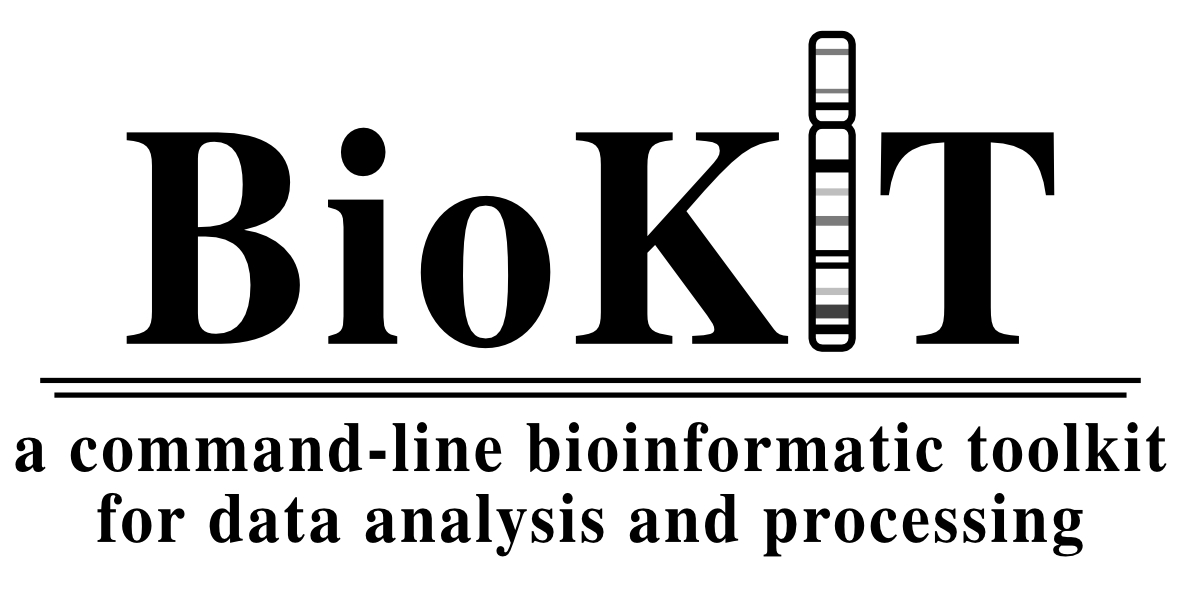 Bioinformatic workflows often rely on individual software to conduct single analyses, which makes maintaining
workflows cumbersome and threatens reproducibility. To address this obstacle, we introduce BioKIT, a versatile
toolkit that conducts diverse processing and analysis functions such as genome assembly quality assessment,
alignment summary statistics, relative synonymous codon usage, codon optimization estimation, and more.
Bioinformatic workflows often rely on individual software to conduct single analyses, which makes maintaining
workflows cumbersome and threatens reproducibility. To address this obstacle, we introduce BioKIT, a versatile
toolkit that conducts diverse processing and analysis functions such as genome assembly quality assessment,
alignment summary statistics, relative synonymous codon usage, codon optimization estimation, and more.
Publication PDF
Documentation
Source Code








OrthoHMM
 Inferring groups of orthologous genes is notoriously challenging and is a prerequisite for comparative genomics and phylogenomics.
However, orthology inference is challenged by sequence divergence, which is pronounced among anciently diverged organisms. We present
OrthoHMM, an algorithm that infers orthologous gene groups using Hidden Markov Models parameterized from substitution matrices,
which enables better detection of remote homologs. Benchmarking indicates OrthoHMM outperforms currently available methods; for example,
using a curated set of Bilaterian orthogroups, OrthoHMM showed a 10.3 – 138.9% improvement in precision.
Inferring groups of orthologous genes is notoriously challenging and is a prerequisite for comparative genomics and phylogenomics.
However, orthology inference is challenged by sequence divergence, which is pronounced among anciently diverged organisms. We present
OrthoHMM, an algorithm that infers orthologous gene groups using Hidden Markov Models parameterized from substitution matrices,
which enables better detection of remote homologs. Benchmarking indicates OrthoHMM outperforms currently available methods; for example,
using a curated set of Bilaterian orthogroups, OrthoHMM showed a 10.3 – 138.9% improvement in precision.
Publication PDF
Documentation
Source Code








OrthoSNAP
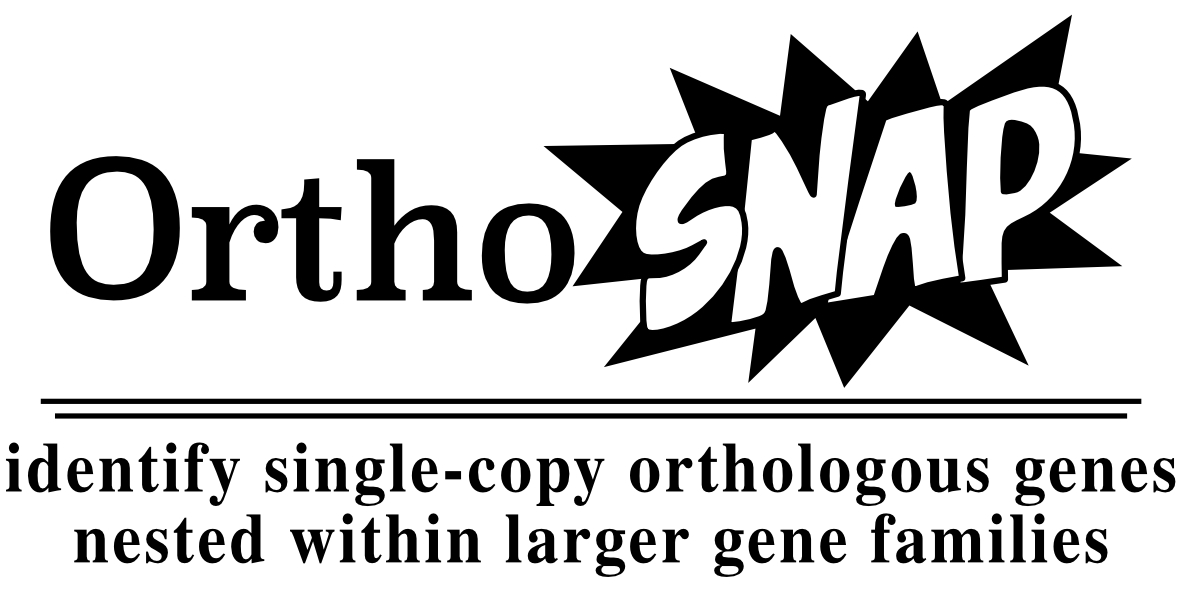 Molecular evolution studies such as phylogenomics and surveys of positive selection often strictly rely on
single-copy orthologous genes (SC-OGs). To increase the number of molecular markers for use in molecular
evolution studies, OrthoSNAP identifies subgroups of SC-OGs nested within larger gene families using a
phylogenetically informed framework. The resulting SC-OGs are termed SNAP-OGs because they have been identified
using a splitting and pruning procedure.
Molecular evolution studies such as phylogenomics and surveys of positive selection often strictly rely on
single-copy orthologous genes (SC-OGs). To increase the number of molecular markers for use in molecular
evolution studies, OrthoSNAP identifies subgroups of SC-OGs nested within larger gene families using a
phylogenetically informed framework. The resulting SC-OGs are termed SNAP-OGs because they have been identified
using a splitting and pruning procedure.
Publication PDF
Documentation
Source Code








orthofisher
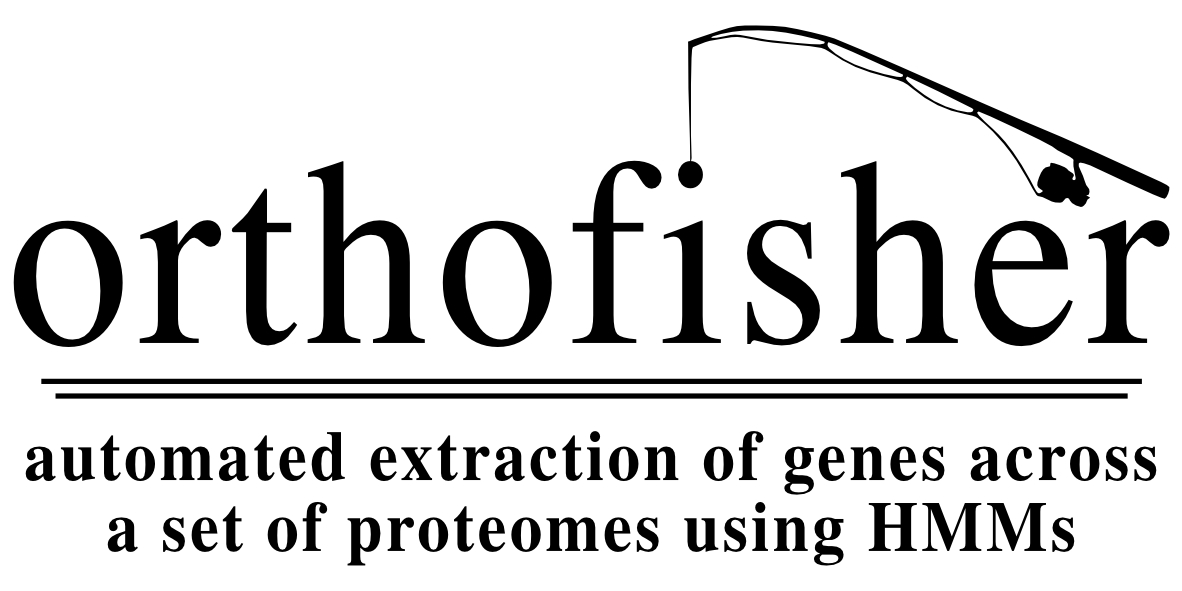 orthofisher conducts automated HMMsearches among a set of proteomes using a predetermined set of orthologs.
Sequence similarity searches classify results as multi-copy, single-copy, or absent in a given genome. For
the purposes of phylogenomics/phylogenetics, multi-fasta files are generated for all sequences as well as
those that are single-copy; for gene family copy number determination, easily parsed output files contain
absolute copy number of hits from the sequence similarity search.
orthofisher conducts automated HMMsearches among a set of proteomes using a predetermined set of orthologs.
Sequence similarity searches classify results as multi-copy, single-copy, or absent in a given genome. For
the purposes of phylogenomics/phylogenetics, multi-fasta files are generated for all sequences as well as
those that are single-copy; for gene family copy number determination, easily parsed output files contain
absolute copy number of hits from the sequence similarity search.
Publication PDF
Documentation
Source Code








treehouse
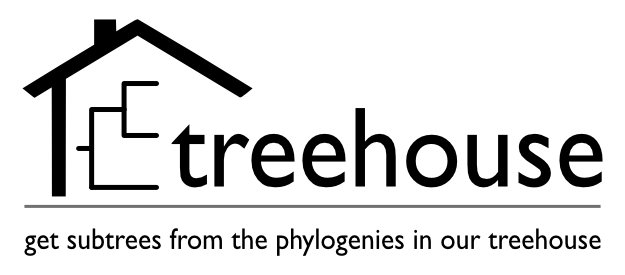 Sometimes phylogenies are so large it is challenging to determine the relationships among a subset of taxa. To
remedy this issue, treehouse, a user friendly GUI app, allows users to obtain subtrees from larger
phylogenies. To obtain subtrees, upload a list of tip names in the desired subtree from an inputted phylogeny
or a phylogeny from the treehouse database. Thereafter, users can download a pdf or newick file of the
subtree of interest.
Sometimes phylogenies are so large it is challenging to determine the relationships among a subset of taxa. To
remedy this issue, treehouse, a user friendly GUI app, allows users to obtain subtrees from larger
phylogenies. To obtain subtrees, upload a list of tip names in the desired subtree from an inputted phylogeny
or a phylogeny from the treehouse database. Thereafter, users can download a pdf or newick file of the
subtree of interest.
Publication PDF
Source Code




ggpubfigs
 Creating publication ready figures can increases figure accessibility and improve science communication. Here,
I present ggpubfigs, an R package with customized themes and colorblind friendly color palettes to help create
publication (or presentation) ready figures. Please contact me if you would like to contribute a theme or color
palette!
Creating publication ready figures can increases figure accessibility and improve science communication. Here,
I present ggpubfigs, an R package with customized themes and colorblind friendly color palettes to help create
publication (or presentation) ready figures. Please contact me if you would like to contribute a theme or color
palette!
Publication PDF
Source Code




Software development led by other teams
Orthoflow
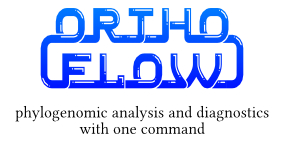 Led by Heroen Verbruggen. The development, maintenance, and execution of phylogenomic workflows is challenging, requiring
programming, data management skills, and familiarity with changing best practices. We introduce Orthoflow, a software
wherein a single command automatically conducts end-to-end phylogenomic analysis using supermatrix
and supertree methods from multiple input data formats. Orthoflow increases the accessibility of
researchers to conduct rigorous phylogenomic analysis flexibly.
Led by Heroen Verbruggen. The development, maintenance, and execution of phylogenomic workflows is challenging, requiring
programming, data management skills, and familiarity with changing best practices. We introduce Orthoflow, a software
wherein a single command automatically conducts end-to-end phylogenomic analysis using supermatrix
and supertree methods from multiple input data formats. Orthoflow increases the accessibility of
researchers to conduct rigorous phylogenomic analysis flexibly.
Publication PDF
Documentation
Source Code







Solu
 Led by Solu Genomics. Solu is a cloud-based platform for real-time genomic surveillance,
addressing challenges in infrastructure, expertise, and data security. Designed for continuous integration of new sequencing data,
it ensures user-friendly and privacy-focused operations, meeting healthcare providers' needs. Solu’s also detects encoded
antimicrobial resistance genes.
Led by Solu Genomics. Solu is a cloud-based platform for real-time genomic surveillance,
addressing challenges in infrastructure, expertise, and data security. Designed for continuous integration of new sequencing data,
it ensures user-friendly and privacy-focused operations, meeting healthcare providers' needs. Solu’s also detects encoded
antimicrobial resistance genes.
Publication PDF
Platform



LVBRS
 Led by LatchBio. Analysis of Bulk RNA-Seq data, differential expression analysis, and functional enrichment requires processing
and handling diverse data types. The LVBRS toolkit (the Latch Verified Bulk RNA-Seq toolkit) conducts end-to-end
analysis, differential expression, and functional enrichment analysis from raw reads from Bulk RNA-Sequencing
experiments using a cloud-based framework. LVBRS enables researchers to focus on interpretation of biological
data, not processing, file handling, data management, and resource allocation.
Led by LatchBio. Analysis of Bulk RNA-Seq data, differential expression analysis, and functional enrichment requires processing
and handling diverse data types. The LVBRS toolkit (the Latch Verified Bulk RNA-Seq toolkit) conducts end-to-end
analysis, differential expression, and functional enrichment analysis from raw reads from Bulk RNA-Sequencing
experiments using a cloud-based framework. LVBRS enables researchers to focus on interpretation of biological
data, not processing, file handling, data management, and resource allocation.
Publication PDF



Top of page
 Since the early 1990's, there has been one predominant guiding light for multiple sequence alignment trimming -
the removal of phylogenetically uncertain sites defined as those that are highly divergent; however, the
efficacy of this approach has been called into question. ClipKIT implements an alternative strategy wherein
sites with phylogenetic certainty are retained and others are removed. Our benchmarking analyses show that
ClipKIT is a reliable and top performing software.
Since the early 1990's, there has been one predominant guiding light for multiple sequence alignment trimming -
the removal of phylogenetically uncertain sites defined as those that are highly divergent; however, the
efficacy of this approach has been called into question. ClipKIT implements an alternative strategy wherein
sites with phylogenetic certainty are retained and others are removed. Our benchmarking analyses show that
ClipKIT is a reliable and top performing software.






 Diverse disciplines in biology process and analyze multiple sequence alignments (MSAs) and phylogenetic trees
to evaluate their information content, infer evolutionary events and processes, and predict gene function.
However, automated processing of MSAs and trees remains a challenge due to the lack of a unified toolkit.
To fill this gap, we introduce PhyKIT, a Swiss-army knife-like toolkit for processing and analyzing
multiple sequence alignments and phylogenetic trees.
Diverse disciplines in biology process and analyze multiple sequence alignments (MSAs) and phylogenetic trees
to evaluate their information content, infer evolutionary events and processes, and predict gene function.
However, automated processing of MSAs and trees remains a challenge due to the lack of a unified toolkit.
To fill this gap, we introduce PhyKIT, a Swiss-army knife-like toolkit for processing and analyzing
multiple sequence alignments and phylogenetic trees.






 Bioinformatic workflows often rely on individual software to conduct single analyses, which makes maintaining
workflows cumbersome and threatens reproducibility. To address this obstacle, we introduce BioKIT, a versatile
toolkit that conducts diverse processing and analysis functions such as genome assembly quality assessment,
alignment summary statistics, relative synonymous codon usage, codon optimization estimation, and more.
Bioinformatic workflows often rely on individual software to conduct single analyses, which makes maintaining
workflows cumbersome and threatens reproducibility. To address this obstacle, we introduce BioKIT, a versatile
toolkit that conducts diverse processing and analysis functions such as genome assembly quality assessment,
alignment summary statistics, relative synonymous codon usage, codon optimization estimation, and more.






 Inferring groups of orthologous genes is notoriously challenging and is a prerequisite for comparative genomics and phylogenomics.
However, orthology inference is challenged by sequence divergence, which is pronounced among anciently diverged organisms. We present
OrthoHMM, an algorithm that infers orthologous gene groups using Hidden Markov Models parameterized from substitution matrices,
which enables better detection of remote homologs. Benchmarking indicates OrthoHMM outperforms currently available methods; for example,
using a curated set of Bilaterian orthogroups, OrthoHMM showed a 10.3 – 138.9% improvement in precision.
Inferring groups of orthologous genes is notoriously challenging and is a prerequisite for comparative genomics and phylogenomics.
However, orthology inference is challenged by sequence divergence, which is pronounced among anciently diverged organisms. We present
OrthoHMM, an algorithm that infers orthologous gene groups using Hidden Markov Models parameterized from substitution matrices,
which enables better detection of remote homologs. Benchmarking indicates OrthoHMM outperforms currently available methods; for example,
using a curated set of Bilaterian orthogroups, OrthoHMM showed a 10.3 – 138.9% improvement in precision.






 Molecular evolution studies such as phylogenomics and surveys of positive selection often strictly rely on
single-copy orthologous genes (SC-OGs). To increase the number of molecular markers for use in molecular
evolution studies, OrthoSNAP identifies subgroups of SC-OGs nested within larger gene families using a
phylogenetically informed framework. The resulting SC-OGs are termed SNAP-OGs because they have been identified
using a splitting and pruning procedure.
Molecular evolution studies such as phylogenomics and surveys of positive selection often strictly rely on
single-copy orthologous genes (SC-OGs). To increase the number of molecular markers for use in molecular
evolution studies, OrthoSNAP identifies subgroups of SC-OGs nested within larger gene families using a
phylogenetically informed framework. The resulting SC-OGs are termed SNAP-OGs because they have been identified
using a splitting and pruning procedure.






 orthofisher conducts automated HMMsearches among a set of proteomes using a predetermined set of orthologs.
Sequence similarity searches classify results as multi-copy, single-copy, or absent in a given genome. For
the purposes of phylogenomics/phylogenetics, multi-fasta files are generated for all sequences as well as
those that are single-copy; for gene family copy number determination, easily parsed output files contain
absolute copy number of hits from the sequence similarity search.
orthofisher conducts automated HMMsearches among a set of proteomes using a predetermined set of orthologs.
Sequence similarity searches classify results as multi-copy, single-copy, or absent in a given genome. For
the purposes of phylogenomics/phylogenetics, multi-fasta files are generated for all sequences as well as
those that are single-copy; for gene family copy number determination, easily parsed output files contain
absolute copy number of hits from the sequence similarity search.






 Sometimes phylogenies are so large it is challenging to determine the relationships among a subset of taxa. To
remedy this issue, treehouse, a user friendly GUI app, allows users to obtain subtrees from larger
phylogenies. To obtain subtrees, upload a list of tip names in the desired subtree from an inputted phylogeny
or a phylogeny from the treehouse database. Thereafter, users can download a pdf or newick file of the
subtree of interest.
Sometimes phylogenies are so large it is challenging to determine the relationships among a subset of taxa. To
remedy this issue, treehouse, a user friendly GUI app, allows users to obtain subtrees from larger
phylogenies. To obtain subtrees, upload a list of tip names in the desired subtree from an inputted phylogeny
or a phylogeny from the treehouse database. Thereafter, users can download a pdf or newick file of the
subtree of interest.



 Creating publication ready figures can increases figure accessibility and improve science communication. Here,
I present ggpubfigs, an R package with customized themes and colorblind friendly color palettes to help create
publication (or presentation) ready figures. Please contact me if you would like to contribute a theme or color
palette!
Creating publication ready figures can increases figure accessibility and improve science communication. Here,
I present ggpubfigs, an R package with customized themes and colorblind friendly color palettes to help create
publication (or presentation) ready figures. Please contact me if you would like to contribute a theme or color
palette!



 Led by Heroen Verbruggen. The development, maintenance, and execution of phylogenomic workflows is challenging, requiring
programming, data management skills, and familiarity with changing best practices. We introduce Orthoflow, a software
wherein a single command automatically conducts end-to-end phylogenomic analysis using supermatrix
and supertree methods from multiple input data formats. Orthoflow increases the accessibility of
researchers to conduct rigorous phylogenomic analysis flexibly.
Led by Heroen Verbruggen. The development, maintenance, and execution of phylogenomic workflows is challenging, requiring
programming, data management skills, and familiarity with changing best practices. We introduce Orthoflow, a software
wherein a single command automatically conducts end-to-end phylogenomic analysis using supermatrix
and supertree methods from multiple input data formats. Orthoflow increases the accessibility of
researchers to conduct rigorous phylogenomic analysis flexibly.





 Led by Solu Genomics. Solu is a cloud-based platform for real-time genomic surveillance,
addressing challenges in infrastructure, expertise, and data security. Designed for continuous integration of new sequencing data,
it ensures user-friendly and privacy-focused operations, meeting healthcare providers' needs. Solu’s also detects encoded
antimicrobial resistance genes.
Led by Solu Genomics. Solu is a cloud-based platform for real-time genomic surveillance,
addressing challenges in infrastructure, expertise, and data security. Designed for continuous integration of new sequencing data,
it ensures user-friendly and privacy-focused operations, meeting healthcare providers' needs. Solu’s also detects encoded
antimicrobial resistance genes.


 Led by LatchBio. Analysis of Bulk RNA-Seq data, differential expression analysis, and functional enrichment requires processing
and handling diverse data types. The LVBRS toolkit (the Latch Verified Bulk RNA-Seq toolkit) conducts end-to-end
analysis, differential expression, and functional enrichment analysis from raw reads from Bulk RNA-Sequencing
experiments using a cloud-based framework. LVBRS enables researchers to focus on interpretation of biological
data, not processing, file handling, data management, and resource allocation.
Led by LatchBio. Analysis of Bulk RNA-Seq data, differential expression analysis, and functional enrichment requires processing
and handling diverse data types. The LVBRS toolkit (the Latch Verified Bulk RNA-Seq toolkit) conducts end-to-end
analysis, differential expression, and functional enrichment analysis from raw reads from Bulk RNA-Sequencing
experiments using a cloud-based framework. LVBRS enables researchers to focus on interpretation of biological
data, not processing, file handling, data management, and resource allocation.

